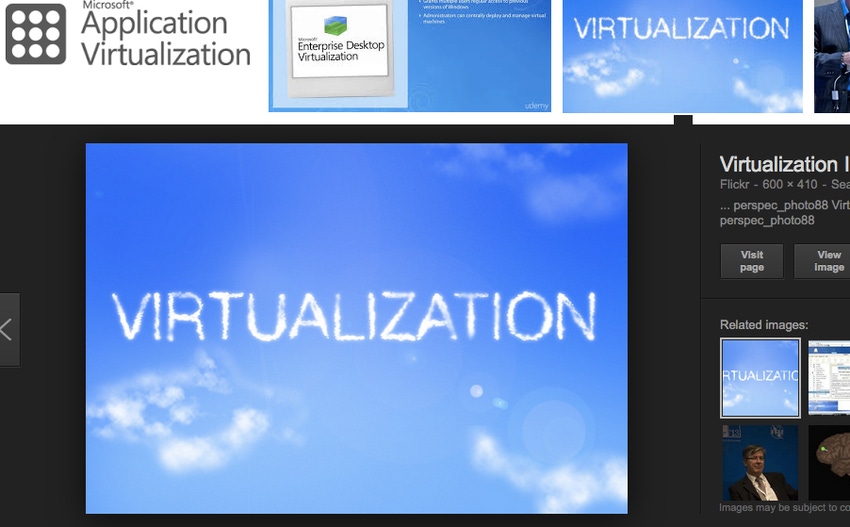Now that many SMBs have virtualized their servers, it’s a good idea to make sure your business follows suit by adopting operations, policies, and a business plan to support that change.
January 30, 2017

Sponsored by Barracuda MSP
 It wasn’t that long ago it was unheard of for an SMB to use virtualization technologies. However, a lot has changed since then. According to Techaisle’s SMB Server Virtualization Adoption market trends study, U.S. SMB server virtualization penetration was 41 percent in 2013 and grew to 54 percent in 2015.
It wasn’t that long ago it was unheard of for an SMB to use virtualization technologies. However, a lot has changed since then. According to Techaisle’s SMB Server Virtualization Adoption market trends study, U.S. SMB server virtualization penetration was 41 percent in 2013 and grew to 54 percent in 2015.
That trend continues to this day as SMBs have joined enterprises in their migration away from the “one-server-for-one-application” model, running multiple apps on one physical server and realizing equal or better performance and reliability with the right solution.
Now that the majority of SMBs have virtualized their servers, some MSPs may need to adapt their business strategy in response to this trend. Here are three things to consider.
1. Look for Opportunities to Virtualize Business Apps
After servers are virtualized, your clients may be ready to virtualize business applications. It’s best not to approach this with guns blazing, though. SMBs may be more comfortable with virtualizing lower tier applications first rather than ones that are business-critical.
One place to start is with backup and disaster recovery (BDR). In fact, you may already be providing BDR via virtualization, so it’s a good place to begin the discussion about how it works and what other applications could be virtualized easily. Clients with significant numbers of remote users could also be an easier sale. Their mobile workforces may rely on virtualization, and you can explain the benefits it would bring to their entire company. This is where demos can be valuable tools. Install some of the applications your customers use and show them how they work.
Although drivers for the shift to virtualization include lower hardware costs and reduced maintenance expenses, those may not be the pivotal issues during a sale. Consider the customer’s pain points. Are they struggling to develop applications in-house? Have they added clustering to try to maintain availability? Explain how virtualization can help overcome those hurdles.
Once business applications are virtualized, your client may then be ready to make the move to full cloud computing, giving department administrators control over processor power, storage, and resources depending on demand. MSPs can provide interface design services, allowing simple access to applications by non-IT personnel, as well as training and pilot program management.
2. Offer Value-Added Virtualization Services
Selling virtualization solutions opens up a wide range of complementary service options for MSPs. Value-added services such as managed routing, managed security, WAN optimization and analytics are just a few examples to keep in mind. Additionally, providing applications via the SaaS model helps to create sticky, recurring revenue opportunities. You can also host applications in your data center or partner with a colocation data center provider to host applications. Moreover, the services and value-adds you provide will be unique, allowing you to define margins and differentiating your company from competitors.
One of the biggest benefits of hosting virtualized applications is the potential cost savings to manage the applications. For instance, many issues can be handled remotely. Plus, for issues that require walking down the hall to your data center, it still means fewer truck rolls to your customers’ locations. Other IT management costs will also decrease — fewer servers means fewer servers to manage.
3. Emphasize the Security and Recoverability Benefits of Virtualization
With any new offering will come a new set of business objections you have to overcome. With virtualization, your clients and prospects may express security concerns. Be prepared to educate customers on why virtualized machines are secure. VMs are completely encapsulated — data from one VM can’t be accessed by another. It’s also important to assure customers that because VMs are isolated from one another, how one operates doesn’t impact the rest. A crash of one OS won’t mean a crash of another application or an OS in another VM.
Also, recovering a VM is exponentially easier—and faster—than restoring a physical backup. Restores that formerly would take two hours or more can be performed in 15 minutes or less. Be prepared to demonstrate this capability during a sales presentation, and be sure to consider how this can improve your current service level agreements (SLAs).
Final Thoughts
Virtualization solutions have come a long way in the past 10 years, making them viable for enterprises and SMBs alike. As the new year begins, it’s a good time to consider how your company is capitalizing on the SMB virtualization trend and make a few adjustments that could lead to virtualization revenue growth this year.
Neal Bradbury is Senior Director of Business Development for Intronis MSP Solutions by Barracuda, a provider of security and data protection solutions for managed services providers, where he is responsible for generating greater business value for the company’s MSP partner community and alliance partners.
Guest blogs such as this one are published monthly and are part of MSPmentor’s annual platinum sponsorship.
You May Also Like
